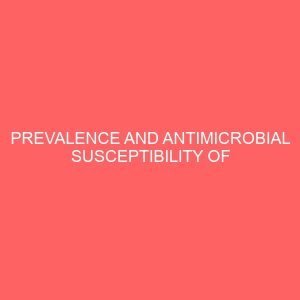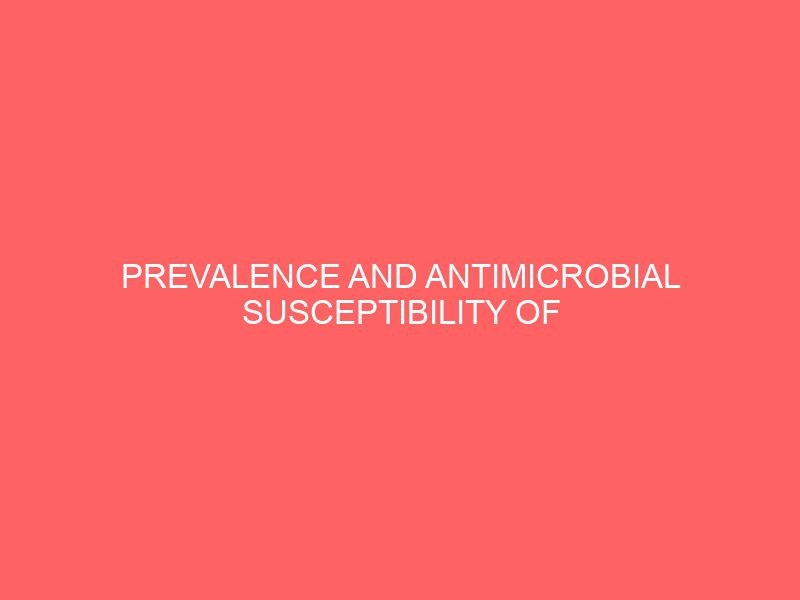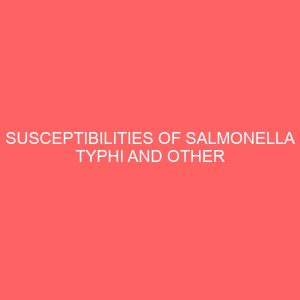Description
CHAPTER ONE
INTRODUCTION
Gram negative bacteria are bacteria that do not retain their crystal violet dye in the gram staining protocol.
They are differentiated by their cell wall structure. The following characteristics are displayed by gram negative bacteria as follows
Cytoplasmic membrane
Thin peptidoglycan layermuch thinner than gram positive
Outer membrane containing lipopolysaccharide outside the peptidoglycan layer
Porin exists in the outer membrane, which acts like pores
There is a space between the layer of peptidoglycan and the secondary cell membrane, called the periplasmic space
If present, flagella have four 4 supporting rings instead of two
No techoic acid or lipopolysaccharide
Some examples of gram negative bacteria include; Escherichia coli, Salmonella species, Pseudomonas species, Klebsiella species, Proteus species, Helicobacter species, Mosoxella species, Cyanobacteria species, Spirochetes species.
They also constitute a serious problem in urinary tract infections in many parts of the world. Appropriate antimicrobial treatments are often critical to decreasing morbidity and mortality among hospitalized patients having the infections caused by the pathogens. Gram negative bacteria are nonspore forming bacilli that grow rapidly on ordinary laboratory media under both aerobic and anaerobic conditions. It has been estimated that symptomatic urinary tract infects UTI occurs in as many as 7million visits to emergency units and 100,000 hospitalised annually. UTI has been the most common hospital acquired infections, accounting for as many as 35 of nosocomial infection. It is the second most common cause of bacteraemia in hospitalised patients Nacem, 2000. UTI is known to occur in all populations but has a particular impact on females of all ages and males at two extremes of life, immunocompromised patients and anyone with function or structural abnormalities of the urinary and excretory system.
UTI is known to be the microbial invasion of any of the tissues of the urinary tract reaching from the renal cortex to the urethrameatus Nicolle, 2000. It is also known to be the presence in two consecutive urine samples of greater than 100rods 105 organisms per ml of a single bacterial strain in the urinary tract. UTI can be categorized in ascending or descending. Infections which are confined to the urethral or the bladder are ascending and referred to as uretitis or cystitis respectively. On the other hand, the pathogens spread from one or other infected body site to the kidney down along the ureter to the bladder. Such descending UTI cause severe kidney infection, a condition called pyelonephritis Parsons, 1958. This is potentially more serious; infections to the urethra are called urethritis and to the prostrate gland are called prostitis. This classification is the presence or absence of symptoms, reoccurrence or absence or presence of complicating factors which are host factors facilitating establishment and maintenance of bacteraemia or worsening the prognosis of UTIs engaging the kidney.
1.1 Aims and objectives
To find out the prevalence of gram negative organisms in the urinary tract among caritas university students.
To investigate their antibiotic sensitivity pattern to enable formulation of drugs for urinary tract infection in our community.
To determine the age and sex prevalence.
To determine the prevalence of bacterial strains and their antimicrobial susceptibility in urine.
To find the pathogenic bacteria commonly responsible with UTI and susceptibility patterns this will help the clinicians to choose the right empirical treatment.








Reviews
There are no reviews yet.